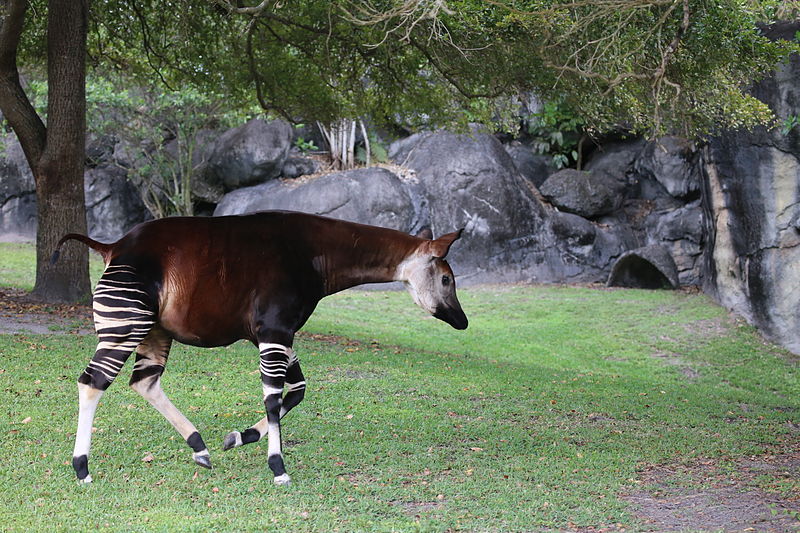
The Okapi is a little known species from the Giraffidae family (indeed the only non-giraffe in the family), Also known as the Forest giraffe, Congo Giraffe and Zebra Giraffe
It is found in the dense jungle of the North-East democratic republic of the Congo, which makes it incredibly hard to see, and is perhaps the reason that it was not described or discovered by Europeans until the 20th century. Indeed, the long time before which Europeans saw this animal lead to its nickname the Unicorn. This is not to say that no one knew about it – it appears to be depicted on the facade of the Apadana at Persepolis – in the modern country of Iran. It was gifted to them, by the kingdom of Ethiopia.
It lies in its own genus Okapia. Females are pregnant for around 15 months before a single calf is born. They live in canopy forests at altitudes of 500m to 1600m. While it will not inhabit forest that has been disturbed by humans, scientists have found that in suitable forest, it can live at densities of around 2 per square mile. While this is low, it suggests that even with relatively little habitat saved, we could retain healthy populations of this animal. Given its secretive habits, little is known about it, perhaps made clear by the fact that it was only found for the first time in 2008 in the Virungas national park.
A place that is more well known for Okapi is the Okapi wildlife reserve, which covers around 20% of the Ituri forest. At 14,000 square km, if this reserve was not disturbed by humans this area alone could support around 15,000 individuals. With a healthy population of Chimpanzees (as well as 14 other primates) forest elephants, leopards and forest buffalo, it has a great deal of potential for tourism, to help conserve this forest.
Major threats to their survival are logging, which is destroying their habitat, and illegal mining. Unfortunately, being a large forest species, they are also hunted in the bushmeat trade as well as their skin, and do not reproduce rapidly.
It is listed as near threatened, with population estimates lying between 10,000 and 35,000 (this is an incredibly wide estimate band). Few tourists reach its home, and as such there is currently little reason for the locals to protect them – hopefully this can change in the future.
[smart_post_show id=”14840″]











